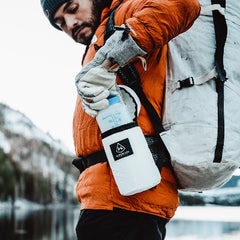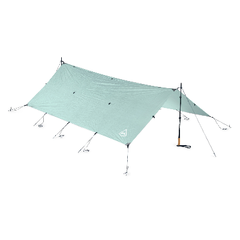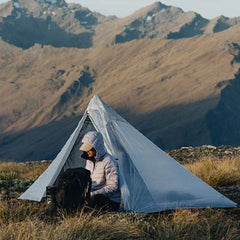You can have all the best gear and the most active imagination while picturing yourself in the wild, but for the inexperienced, the anxiety about the unknown can get in the way of getting feet out the door at all. “Where can I go? What do I do once I get to camp? HOW do I get there? I know I’ll be starving! And what about when Nature calls?”
Many of you readers have already defeated these fears, but some of you have not. And some of you adventure veterans may have friends you’d love to share your passion with but have forgotten how intimidating these obstacles can be. In that case, get ready for a refresher that’ll help you help your soon-to-be travel companions.
In our dreamy, perfect world, people of all stripes would be relishing every opportunity to enjoy the outdoors, and we wouldn’t have to make a case for why heading out to the backcountry is ALWAYS the best idea EVER. (The marketing team here would be out of their jobs, but at least their schedules would be clear.) But, of course, we know that’s not the case, and it’s in large part precisely because of the aforementioned hurdles.
We have a keen appreciation for “Skilled Encouragers,” and that’s how Dan Becker got on our radar. Approachable, humble, funny, and not scary serious, he’s just the kind of guy that can help the uninitiated lace up their shoes and get out to experience why folks like us have made exploring the outdoors our obsession and priority. A recent video on his YouTube channel caught our eye because it successfully addresses everything we’ve been talking about so far.
We reached out to Dan for a wee deeper dive into everything his video covers in nine minutes and thirty-five seconds. Getting right to the point, he lays it all out: “Backpacking really isn’t as complicated as people make it out to be. Basically, you throw on a backpack; you hike, you camp, and you do it again the next day if you want to. Here are the basics to get you backpacking with a lot more confidence than you likely would have had otherwise.”
And with that, let’s jump in!

I’m Dan Becker, and I got completely addicted to backpacking maybe six-seven years ago and have since hiked all over the country. Every season, climate, you name it. But I’m just a regular dude that likes to go on the weekends. Not tons of miles. And definitely not a thru hiker. I wanna be home after about 3-4 days! But I couldn’t get enough of seeing and experiencing things out on a trail in the backcountry that I never would have otherwise. And sometimes, I like to bring my kids along. So, one day I grabbed a camera and began to share what I learned on YouTube. This is my go-to advice that I give for successful overnight trips outdoors.
TRIP PLANNING
This can seem like a daunting task, but it’s really not. Especially when you can find people that have already been where you want to go.
Once you’ve decided on a location:
- Call forest or park headquarters and ask questions like, where are the trailheads? What’s parking like? Is there water along the trail? Is there water at camp? Are the water sources only available during certain seasons? You can even ask them what their favorite trails are and are there cool sights to see, or what the best campsites are
- Then find out the details about if you can have campfires, and ask about Leave No Trace rules
CHOOSING GEAR
Collecting gear is also a big hobby for me. I’m a major gear nerd. But when I first started, it was a huge learning curve. I really thought that I just packed as much as I could into a backpack so I wouldn’t miss something. Man, was I in for a back-breaking surprise.
If you don’t have any gear, this is your chance to call up your hiker friends and borrow gear. Or, you can even rent gear from an outdoor store. When you’re picking out gear, the biggest and heaviest gear will be your shelter, your sleep system, and your backpack. If you borrow gear, your options will obviously be limited to what other people are lending you, So, don’t base how good or how bad the trip ended up being based on the gear. If you’re lucky enough to be purchasing new gear, I’ll save you some headaches.
Buy the biggest and most expensive gear items in this order:
- First, your shelter
- Then your sleep system
- Then your backpack
Then you’ll know your backpack will end up being the right size, and your sleep system will actually fit inside your shelter. Once you buy those three things, you can move on to the rest of the gear.
- Only buy things that are necessary for your trip
- Don’t pack your fears. In other words, don’t bring things out of fears because you think you’ll end up needing it
- At the same time, don’t be afraid to bring a comfort item or two like an air pillow, or maybe some camp sandals for when you get to camp, especially if you think it’s gonna make the trip a little bit nicer for you
- Then, practice setting up your gear at home! Do not expect to know how to use it when you get out to camp. YouTube isn’t an option out there
WHAT TO WEAR
It’s easy to forget about this one. I mean, I’ll just wear what I normally do, right? Wrong. I had no clue how important this is.
- Try your best to wear only synthetic or wool clothing
Don’t wear cotton because it’s heavy and it doesn’t dry out easily. You’re gonna get dirty out there, you’re gonna stink, and unfortunately, you’re just gonna have to deal with that. There are no showers out there, so bringing an extra set of clothes isn’t necessary. The only extra clothing you should pack are:
- A mid-layer
- A puffy
- A rain jacket
If you’re only going for the weekend, you’ll be fine with just those clothes you’re wearing.
If your trip is longer, you can usually find a stream or a river to clean clothes if you absolutely need to.
Choosing the right footwear is extremely important. Bad footwear means that you’ll likely get blisters, and hiking miles in the backcountry with blisters is no fun. One huge footwear mistake that I see new hikers make is that they go out and buy brand new shoes or boots. New shoes or boots are not meant to be tested in the backcountry, so instead:
- Use boots or shoes that you already own even if you’ve only used them around town. The only prerequisite is that they have comfortable and good tread
- Then, make sure you bring an extra pair of socks or two and change them, out at least once a day.
NAVIGATION
Although it’s a highly useful skill, extreme compass reading is not a full-on necessity. In today's world, GPS’s and paper maps go a long way. However, if your GPS fails, you can still grab your compass and find north.
- Always let someone back home know your complete trip plans
- Bring a paper map of the area in case your GPS fails
The best navigation app I’ve found yet is GAIA GPS. It’s an awesome resource for finding your way around in the backcountry.
- Learn where the trailheads are. A trailhead is simply where a trail meets a main starting point. Sometimes they can be hard to find so a ranger or a local can help you find it
- Find out if parking is allowed at the trailhead and if you’re camping, if your car can stay there overnight
- Stay on trail, and only change your route if you let others know where you’re headed
- If you’re a new backpacker, plan on hiking one to two miles per hour, and that’ll give you a good idea of how long it’s gonna take you to get to camp
- Do your best to leave early, so you get to camp while there’s still light, and you’ll have an easier time setting everything up
CHOOSING CAMPSITES
Another easily neglected item. This often gets turned into ‘a point we’ll stop when we get tired’ or ‘a spot on the map’. I cannot overstate how important it is to research the area you’re headed.
Depending on the location, some places will allow you to camp any place you like. Others have established sites you’re required to stay at.
- If you’re headed to a place where you have to stay at established campsites, don’t be too ambitious with your hiking miles ‘cause you’ll likely run outta steam
- Choose campsites that are reasonable distances for your first few trips
- One good thing about established campsites is that it’ll likely provide a better camp
experience since the area is typically cleared and good for tents
If you’re headed into an area where you can camp anywhere you like, pick sites based on a few different things:
- Research the area. Is there water nearby? How about terrain. Have others camped there before?
- Don’t camp in low areas. Water flows to areas with the least resistance, and cool air settles in low areas at night and can make your trip a lot colder than you thought
- Look for dead trees and limbs and stay out of their way as they may fall on your head overnight. If you’re tenting, soft and level ground can help with sleep and insulation–just make sure you’ve checked for sticks, rocks, and anything else that can damage your tent
- Having water nearby is good, but it also brings mosquitos. So, camp at a reasonable distance if you can
- Don’t be a dummy with fires
FOOD
This is a very personal topic, but choosing the RIGHT foods can make or break a trip. You’ll never want to carry two cans of beans and a 22 oz steak ten miles. If you just HAVE to have those beans and steak, consider eating them the first night so you won’t have to carry heavy food the rest of the trip.
Choosing high calorie, low weight food can make the difference.
- If you plan to cook, the lightest options are the dry foods that are “just add water”–most outdoor stores have those foods that are freeze-dried or dehydrated meals in the camping section. Those are awesome options for those people that don’t want to think about cooking while saving additional weight by not having to bring extra cooking gear
- Always bring an extra meal or two just in case
- Snacking is important if long hikes are in the plans
- Drink plenty of water even when you don’t feel thirsty. The backcountry is not a fun place to get dehydrated
WATER TREATMENT
I have had countless people tell me they just drink water from streams without filtering or treating the water. I can’t stress enough how dumb that is. Giardia is a common side effect of not treating water. Even at home, giardia will knock you out. Can you imagine having to hike miles with it? The extra couple ounces of gear it takes for a water filter or tablets are well worth peace of mind.
- Bring a good water filter or water treatment tablets
- Don’t ever trust the water in streams or lakes
- Have a backup water treatment in case your filter fails
- If all else fails, you can boil water if you can get a fire going
HOW TO POOP
Yep. This scares people off immediately when you tell them there's no toilet at camp. But as gross as it sounds, it’s really not that bad. It’s actually quite the experience!
- Take 75 steps off trail and bring along something to dig a small hole.
- Drop your pants–and one of the best tips I have is to take one leg out of your pants completely as chances are, you’re not a good aimer yet.
- Squat, hold onto a tree, and let ‘er rip
- Then when you’re done, bury the TP and mark the spot with a stick, so others are not diggin’ up your land mine
HYGIENE
Once you’ve backpacked a couple times, you’ll be less and less concerned about how everyone smells on the trail. However, keeping your hands clean if you can with some sanitizer or even a small bottle of biodegradable soap is always a good idea.
- Bring a small roll of toilet paper, maybe some Wet Wipes, and a small bottle of hand sanitizer
There is not enough deodorant in the world to manage the stink of the backcountry, so leave it home. Deodorant can actually attract bugs and animals anyway.
ANIMALS
I live in an area with little to no bear population. But I have hiked in several locations where they are very prevalent. Even there, I’ve only ever heard them running off in thru the brush as I hiked past. That’s not to say that you shouldn’t be prepared. It’s just to say, you shouldn’t worry. In almost every circumstance, they are just as afraid of you as you are of them. If you’re in grizzly territory, or territory with a more aggressive animal, learn how to be prepared and also how to handle the situation properly if you’re confronted by the animal.
In reality, your biggest worry shouldn’t be bears and large animals, but instead, the smaller ones like rodents that can get into your food bag. However, if you’re heading into bear territory, it’s always a good idea to bring bear spray.
- Find out ahead of time what the bear situation is. Some areas actually require you to bring a bear canister in order to pack food and other smelly items in it
- Other areas may not require anything at all, but it’s always a good idea to hang your food high enough in a tree that it can’t be reached
- If you don’t own a bear canister, you can usually rent them at an outdoor store near the location where you’re hiking
FIRST AID
It’s always better to have it and not need it, than need it and not have it.
This is something you always bring but will hopefully never need. The first aid that you’ll use the most will be the insect repellent and the foot care.
- Bring a small bottle of repellent that is good for mosquitos and ticks, bring moleskin or leuko tape for treating blisters
- If you feel like your feet are getting hotspots from hiking, stop hiking and treat it before it becomes a blister
- You can bring other first aid stuff as you feel you’re gonna need it, but don’t bring supplies you don’t know how to use, cause it’s just gonna be added weight
To sum it all up, there’s really no wrong way to backpack. There’s just learning from people who’ve done it a few times already and gathering some good info on what works and what doesn’t. Now get out there and explore and see places you’d NEVER be able to see otherwise!
https://www.youtube.com/watch?v=ISgotK8HGu8&t=1s
For more helpful tips and tricks, or comprehensive gear reviews, head to Dan’s YouTube channel. https://www.youtube.com/user/dbecker789
Follow The Shakedown on our blog for advice, shared experiences, and expertise from all the rad folks we walk with.




















